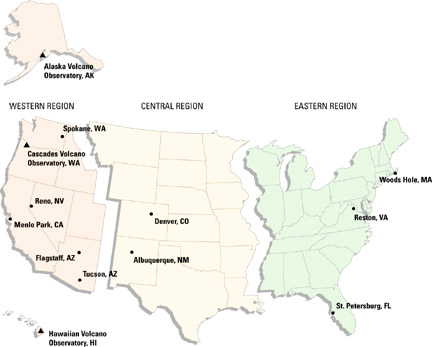
In fiscal year 1998, the GD's appropriated budget for all programs is $235.2 million. In addition to Congressionally appropriated funds, the GD receives reimbursements from other Federal agencies for conducting research. For example, the National Aeronautics and Space Administration supports the GD's astrogeology program. In turn, the GD offers grants to State and local agencies, universities, and the private sector to undertake earth science investigations. GD scientists also conduct cooperative research with the private sector and international governments through formal agreements.
The GD staff strives to produce objective, reliable earth science information on geologic hazards, geologic resources, and geologic processes. Whether in the form of a technical report, map, data base, or software application, results of GD research are used by policymakers at Federal, State, and local levels to make informed land-use and resource decisions.
To meet the earth science information needs of the Nation, the GD maintains a staff of nearly 1,250 research scientists and technical specialists. Areas of expertise are primarily geology, geophysics, and geochemistry but also include mineralogy, astrophysics, oceanography, biology, botany, soil science, hydrology, geography, and petroleum, mechanical, environmental, civil, and nuclear engineering.
The GD is headquartered at the USGS National Center in Reston, VA, and has facilities at three regional USGS centers: the Eastern Region Center is located in the National Center in Reston, VA; the Central Region Center is in Denver, CO; and the Western Region Center is in Menlo Park, CA (fig. 2). The Hawaiian, Alaska, and Cascades Volcano Observa-tories are managed through the GD, which also maintains field centers in Woods Hole, MA, St. Petersburg, FL, Reno, NV, Tucson, AZ, Flagstaff, AZ, Albuquerque, NM, and Spokane, WA. In addition, more than 30 GD scientists are stationed permanently at universities and research institutions.

Figure 2. Primary sites within the three USGS administrative regions, including regional centers, field centers, and volcano observatories, where GD scientists are stationed in the United States.